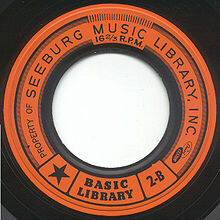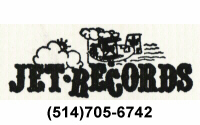|
|
Seeburg Mood Music 16 2/3 RPM Records
HERE'S THE
INFO ABOUT THEM...

The Seeburg 1000 phonograph
was introduced in
1959 as model BMS1.
[1] The system replaced
the Seeburg "Library Unit" which served the
same purpose, but played standard 45 rpm records. The Seeburg 1000 is
enclosed in a metal cabinet 22 inches (55 cm) wide by 14 inches (35 cm)
tall by 12 inches (30 cm) deep.[2]
A later version called
the Seeburg Background Music Compact, model
BMC1, is housed in a windowless, blue and grey painted metal box. This
version contains only the record playing mechanism, without any
amplifier or timer built in.[3]
The player is capable of
playing both sides of up to 28 records and
repeating the process indefinitely. The records are stacked on the
spindle with the first side to be played on the bottom of the stack. A
special tone arm with two needles, one above and one below, is used to
play both sides of each record.
A rotating baseplate
below the records prevents damage to the bottom
playing surface while restacking the records. A similar weight on top
of the stack ensures stable playback of the bottom side of the topmost
record.
 1959 Seeburg "Basic"
Record
1959 Seeburg "Basic"
Record
 1969 Seeburg "Mood" Record
1969 Seeburg "Mood" Record
|



